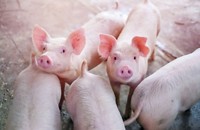Advertisement
Grab your lab coat. Let's get started
Welcome!
Welcome!
Create an account below to get 6 C&EN articles per month, receive newsletters and more - all free.
It seems this is your first time logging in online. Please enter the following information to continue.
As an ACS member you automatically get access to this site. All we need is few more details to create your reading experience.
Not you? Sign in with a different account.
Not you? Sign in with a different account.
ERROR 1
ERROR 1
ERROR 2
ERROR 2
ERROR 2
ERROR 2
ERROR 2
Password and Confirm password must match.
If you have an ACS member number, please enter it here so we can link this account to your membership. (optional)
ERROR 2
ACS values your privacy. By submitting your information, you are gaining access to C&EN and subscribing to our weekly newsletter. We use the information you provide to make your reading experience better, and we will never sell your data to third party members.
Biological Chemistry
Confining Biotech Organisms
Study panel says redundant techniques should be required
by BETTE HILEMAN
January 26, 2004
| A version of this story appeared in
Volume 82, Issue 4

Integrated, redundant methods should be developed to confine some genetically engineered plants and animals, says a report from the National Research Council (NRC). The report was requested by the Department of Agriculture.
Although many biotech organisms present no risk, some plants, such as those producing pharmaceuticals, and transgenic insects and salmon could breed or compete with wild relatives and pose risks to humans or ecosystems, the report notes.
Because no single bioconfinement method can be 100% effective, multiple techniques should be employed to prevent biotech animals and plants from escaping into natural ecosystems, the report says. Physical barriers, such as creating space between biotech crops and wild relatives, have been the primary technique used so far. But they are ineffective with biotech fish and insects, the NRC study notes. It concludes that more research is needed before biotech containment methods can be adopted for commercial production.
"Deciding whether and how to confine a genetically engineered organism cannot be an afterthought," says committee Chairman T. Kent Kirk, professor emeritus of the department of bacteriology at the University of Wisconsin, Madison.
A study by the Pew Initiative on Food & Biotechnology reaches similar conclusions regarding transgenic insects. It says: "Genetically modified insects may offer public health and agricultural benefits, but clear regulatory oversight is lacking." Mosquitoes genetically modified not to transmit malaria could help prevent the disease, for example. But "the federal government has no comprehensive policy on how the insects will be reviewed," the report says.
Gregory Jaffe of the Center for Science in the Public Interest concludes from the reports that, because reliable confinement systems are not available, "risky applications of genetic engineering, such as producing vaccines in food crops, should not be allowed."
As the print edition of C&EN went to press, USDA announced that it is considering major changes in its regulation of genetically engineered organisms to keep up with advancing technology.
It will likely establish a tiered regulatory system. Plants that appear to pose little or no risk, such as herbicide-tolerant corn and soybeans, will be given the least scrutiny, and those plants and animals that pose potentially greater risk, such as plants producing pharmaceuticals and industrial chemicals, would be given more scrutiny.
USDA will prepare an environmental impact statement evaluating its current biotechnology rules and several possible regulatory changes, including a multitiered, risk-based permitting system. It is also considering changes that will provide for long-term monitoring of transgenic organisms.
Currently, USDA regulates plants and insects that pose potential risks to plants. Now, it is considering regulating more categories of transgenic organisms--those that pose risks to livestock, human health, and the environment (Fed. Reg., Jan. 23, page 3271). Comments on USDA's proposal will be accepted until Feb. 23.





Join the conversation
Contact the reporter
Submit a Letter to the Editor for publication
Engage with us on Twitter